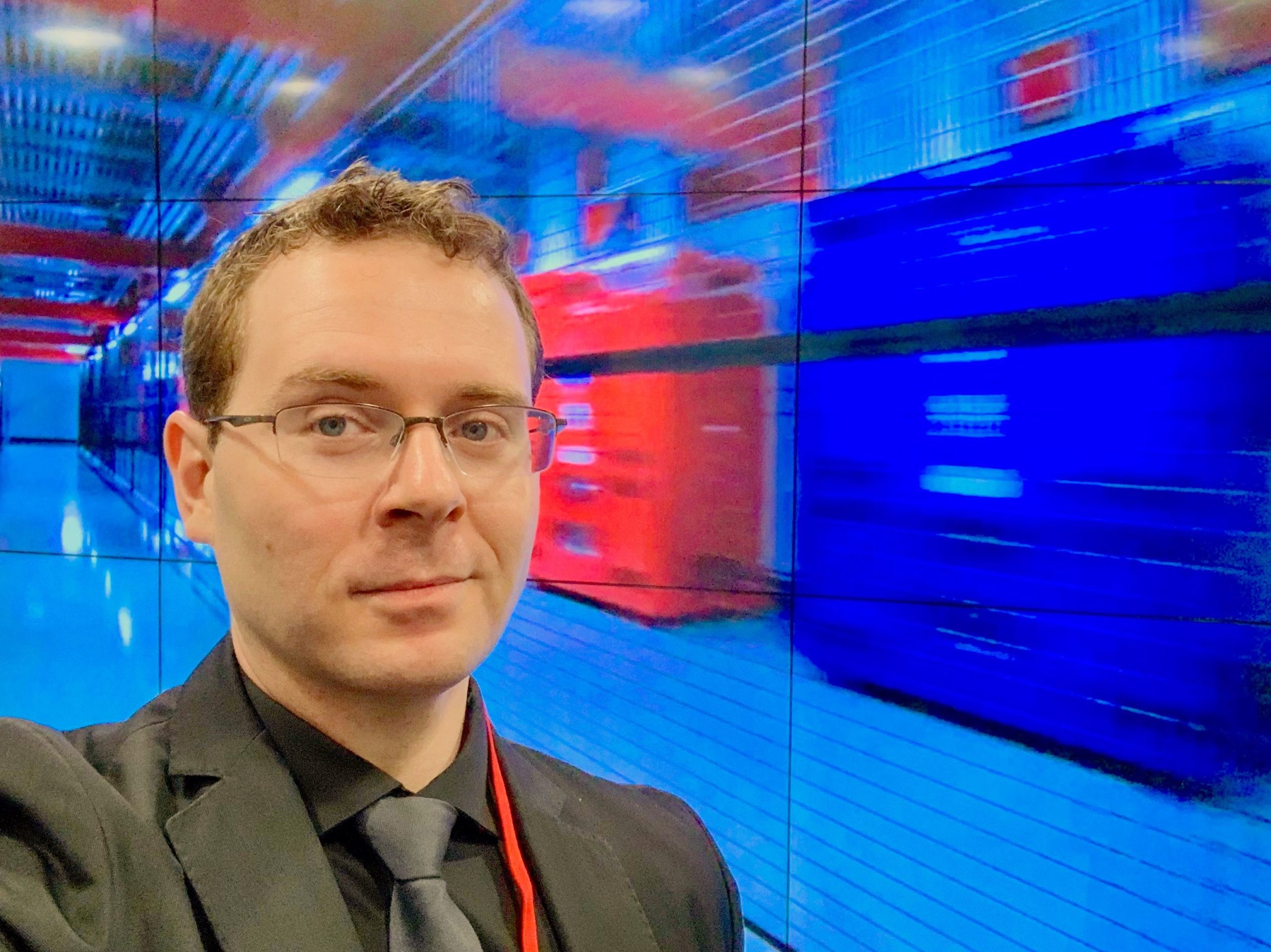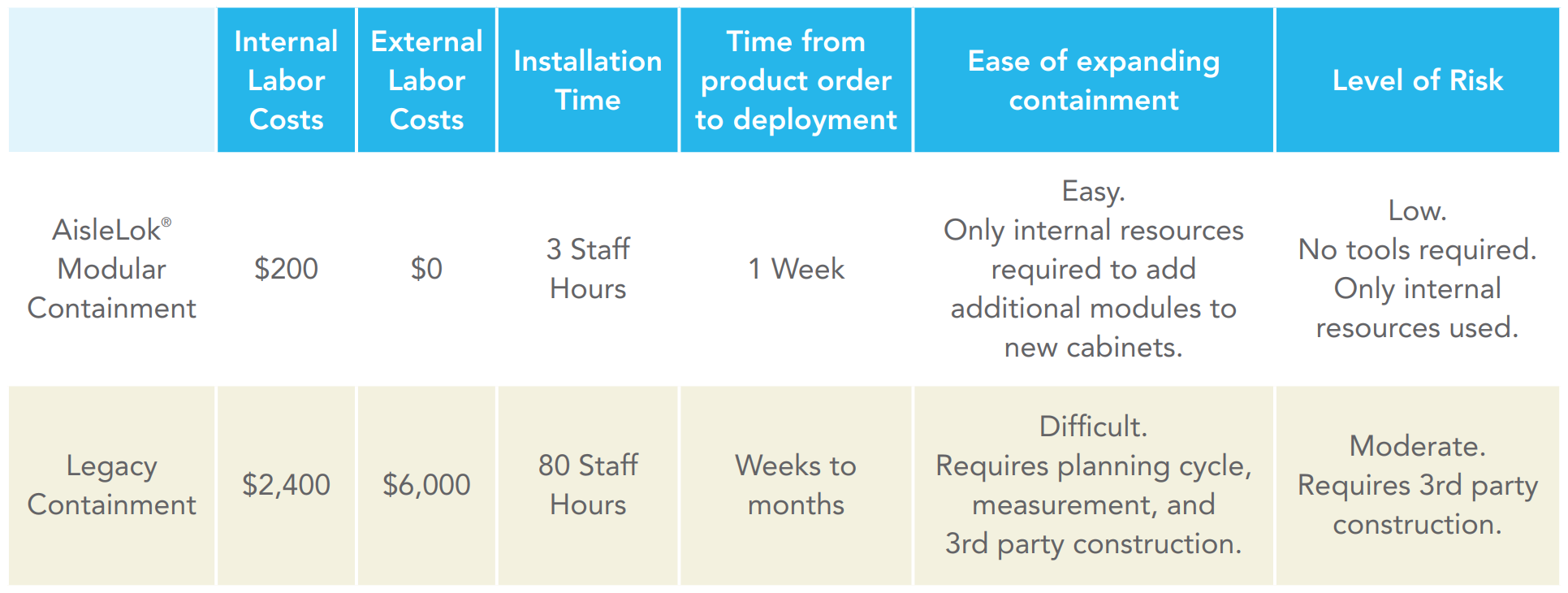Learn Why Modular Airflow Containment Makes Sense10 min read

The fun part about working with data centers is the diversity in the designs that we see. Yes, there is lots of standardization and best practices when it comes to design. However, many data centers still have to take unique approaches depending on their specific use-cases.
Today, we see new requirements regarding high-performance computing (HPC), virtualization, and even the edge. Let me give you an example; I recently helped conduct the 2018 State of the Data Center Survey, which we’ll be presenting at this year’s AFCOM Data Center World Global Conference. We found out that many organizations are already actively deploying edge locations. Specifically, 30% stated that they have 6-10 edge locations deployed already. Furthermore, 57% stated that they’d have 21-40 potential edge locations within 36 months. When it comes to power, currently, the average power density for edge deployments is 6kW-10kW per rack, as indicated by about 34% of our respondents.
All of this translates to new data center design considerations and deployment methodologies. This might mean that you’re deploying an edge data center, removing legacy components and replacing them with all-flash or converged systems, or you’re leveraging a hybrid cloud model. This will impact how your data center is designed and operated. Today, organizations are looking at new ways to optimize their data centers and the critical resources they house. Airflow management and computational fluid dynamics have helped data center operators create more efficiency and better understand how to design their data centers. Some will work with modular containment around key systems to help optimize air flow. Others might look at new airflow management systems which impact HPC or new converged systems.
In this article, I want to focus on modular airflow containment. With the influx of new use-cases when it comes to data center deployments, IT leaders are constantly looking for new ways to innovate their design and become even more efficient. To that extent, modular containment solutions are designed to provide the core benefits of containment with greater flexibility and value. New types of affordable designs are made to be scaled across multiple rows and can be applied to the hot and cold aisle.
Consider these big benefits:
- Rapid deployment. New types of modular containment designs, such as Upsite’s new Sliding Doors, are made to be deployed rapidly with little or no interruption to computer room operations. This is a big factor as downtime is often seen as a deal-breaker when it comes to various types of data center upgrades. Furthermore, modular containment features an innovative magnetic application that allows the entire solution to be self-installed in just minutes. This type of tool-less design allows the modular containment products to be easily moved and reused as your computer room evolves.
- Easily integrated into your data center model. When it comes to efficiency and cooling design, a big factor for data center leaders is the ease of integration with existing data center systems. In that sense, leading modular containment solutions do not require a 3rd party to provide custom measurement, design, or installation, thus saving you time and money up-front. Quite literally, these modular containment solutions arrive ready-to-install.
- Modular designs as you need them. The nice aspect about modular containment products is that you can design around what you specifically require. That is, you can work with rack top baffles, bi-directional doors, and even adjustable rack gap panels. Each of these is created to fit a variety of use-cases for large or edge data center deployments.
Legacy vs. Modular Containment
Depending on your use-case, containment solutions may very well vary. However, there is real-world ROI if you’re working with modular containment. Recently, Upsite published a whitepaper outlining the differences between legacy and modular containment. A major focus revolved around the ROI of the product. So, the ROI for implementing Upsite’s Modular Containment and legacy containment based on the energy savings was estimated using the average installed cost for each system. For this calculation, an industry average energy cost of $.10/kWh was used.
Here’s what they found: The ROI for AisleLok Modular Containment is 13.5 months. This is significantly less than 24 months for legacy containment. AisleLok Modular Containment payback time is 56% that of legacy containment.
In addition to the ROI of product costs, there are additional considerations worth evaluating, including adjustments to the data center that may be required, depending upon the layout. The table below shows a comparison of this additional evaluation criteria, both regarding costs and time associated with these two categories of containment.
Furthermore, they found that modular containment solutions posed minimal risk to the data center. That is, there are no construction activities that require shutting down part or all of the data center. They can be done during normal operating hours or scheduled maintenance periods.
Final Thoughts
In today’s digital age, data center efficiency will be extremely important. The distribution of IT, new types of cloud architectures, and a mobile workforce all spell more reliance on our data centers. This means that efficient designs will be critical.
As you do your research, know that containment solutions are very important when it comes to effective airflow management. To that extent, modular containment, when deployed for the right use-case, can offer a low-cost solution to airflow management while still improving data center performance. So, if you’re working with a new data center design, or are looking to expand your edge ecosystem – make sure to work with modular containment as a real option. Not only can they be deployed quickly, but they also are customizable and can fit a variety of great use-cases.

Bill Kleyman
Industry Analyst | Board Advisory Member | Writer/Blogger/Speaker | Contributing Editor | Executive | Millennial
Bill Kleyman is an award-winning data center, cloud, and digital infrastructure leader. He was ranked globally by an Onalytica Study as one of the leading executives in cloud computing and data security. He has spent more than 15 years specializing in the cybersecurity, virtualization, cloud, and data center industry. As an award-winning technologist, his most recent efforts with the Infrastructure Masons were recognized when he received the 2020 IM100 Award and the 2021 iMasons Education Champion Award for his work with numerous HBCUs and for helping diversify the digital infrastructure talent pool.
As an industry analyst, speaker, and author, Bill helps the digital infrastructure teams develop new ways to impact data center design, cloud architecture, security models (both physical and software), and how to work with new and emerging technologies.
Airflow Management Awareness Month
Free Informative webinars every Tuesday in June.


0 Comments